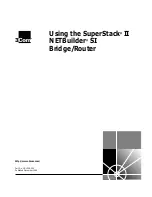
RSPAN
•
RSPAN Vlan/BD is
not
used for data traffic.
•
The maximum number of supported RSPAN sessions are 14.
•
Only one source port is supported per RSPAN.
•
Source ranges (vlan range or port range) is
not
supported.
•
Vlan filtering is not supported.
•
If two RSPAN configurations sessions are configured on two RSPAN BDs associated to the same Trunk
EFP, the traffic from the first session flows to the second session after it is configured.
•
RSPAN destination configuration for Layer2 pseudowire is
not
supported.
•
If RSPAN BD is associated with a VPLS pseudowire, the traffic flows through the VPLS pseudowire.
•
If RSPAN source and destination are separated by pseudowire, then the RSPAN VLAN details must be
updated to both RSPAN source switch and destination switch. The pseudowire should also be dedicated
for RSPAN traffic.
•
BDI should not be created when that BD is part of RSPAN.
•
Monitor session should be created only after RSPAN BD is created.
•
Do not have RSPAN bridge domain as part of RSPAN source interface.
RSP3 module
•
RSPAN is
not
supported on the Cisco ASR 900 Series RSP3 module.
Understanding Local SPAN and RSPAN
Information About Local SPAN Session and RSPAN Session
Local SPAN Session
A local Switched Port Analyzer (SPAN) session is an association of a destination interface with a set of source
interfaces. You configure local SPAN sessions using parameters that specify the type of network traffic to
monitor. Local SPAN sessions allow you to monitor traffic on one or more interfaces and to send either ingress
traffic, egress traffic, or both to one destination interface.
Local SPAN sessions do not interfere with the normal operation of the switch. You can enable or disable
SPAN sessions with command-line interface (CLI) commands. When enabled, a local SPAN session might
become active or inactive based on various events or actions, and this would be indicated by a syslog message.
The
show monitor session span session number
command displays the operational status of a SPAN session.
A local SPAN session remains inactive after system power-up until the destination interface is operational.
The following configuration guidelines apply when configuring local SPAN:
•
When enabled, local SPAN uses any previously entered configuration.
Layer 2 Configuration Guide for Cisco NCS 4200 Series
9
Configuring Switched Port Analyzer
Understanding Local SPAN and RSPAN
















































